Cosmic Jaw-Droppers Include a Twisted Galaxy and an Aurora Rocket Volley
From Martian vistas to glowing red nebulae, check out our picks for the best space images of the week
A nebula prepares to swallow some stars, NASA fires rockets at an aurora, Hubble snaps a galaxy being contorted by its dance partner and more in the week's best image-driven space news.
.
Aurora Chasers
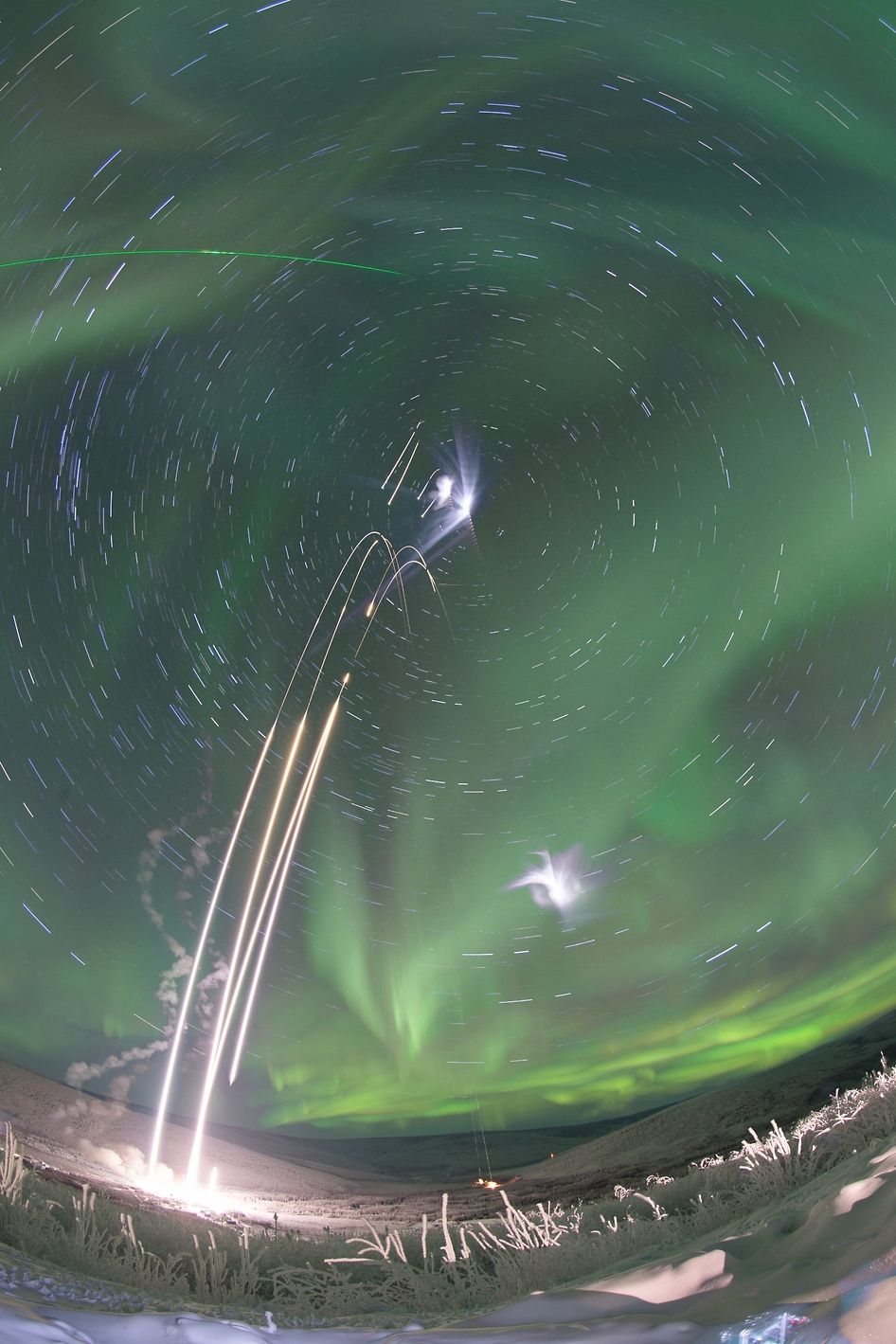
Some people spend hours getting the perfect shot of auroras lighting up the night sky. NASA prefers to shoot rockets at them. This composite image shows four suborbital sounding rockets lifting off from the Poker Flat Research Range in Alaska on January 26.
Auroras happen when energetic particles from the sun get funneled towards the Poles by Earth's magnetic field. When they hit the atmosphere, the particles infuse gases with extra energy, causing them to emit light. But scientists are still trying to understand how this also affects various meteorological processes. These rockets were carrying a pair of experiments designed to study how nitric oxide and ozone in Earth's atmosphere respond to the influx of radiation that sparks the northern lights.
Twisted Galaxy
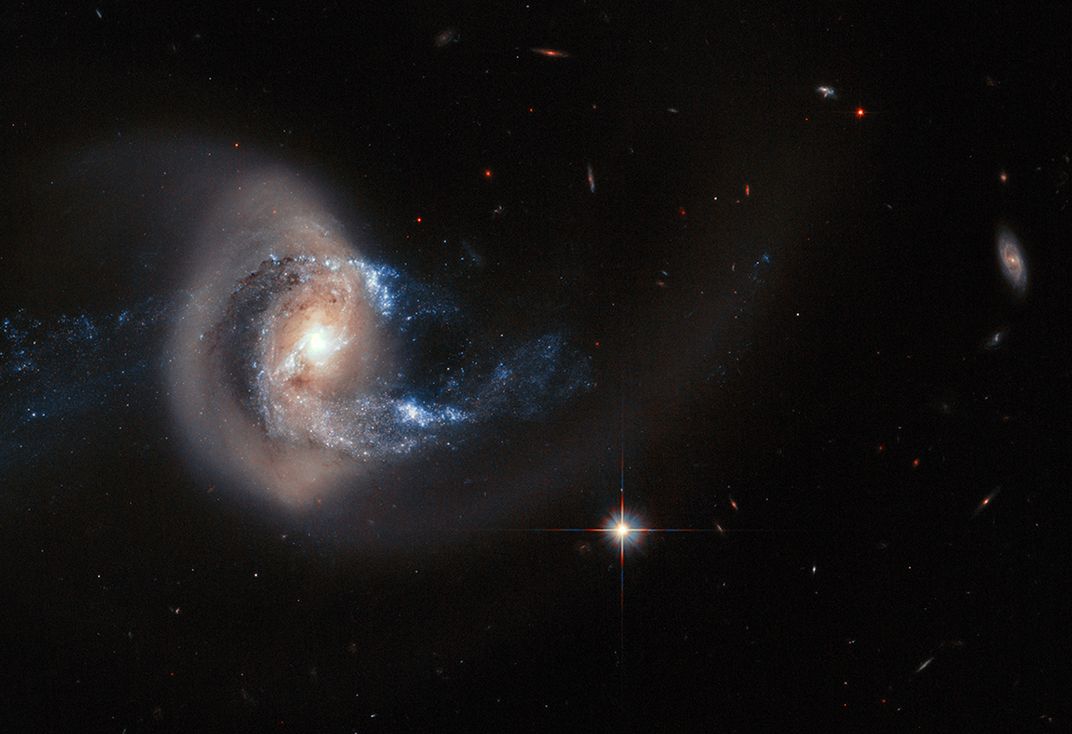
The spiral galaxy NGC 7714 has seen some tough times. About 100 million years ago it drifted too close to a galactic neighbor, and the two objects began a dramatic gravitational dance. This image, released on January 29 and snapped by the Hubble Space Telescope, shows how the galaxy has been transformed by its close encounter.
The graceful arms of NGC 7714 got twisted out of shape and dragged into long tails. During the interaction the galaxy also ripped material from its smaller companion, forming a hazy stream of matter that is being funneled into the bigger galaxy's core. The incoming matter is triggering the birth of huge new stars, lighting up the galaxy with sparkling bursts of blue.
Cosmic Maw
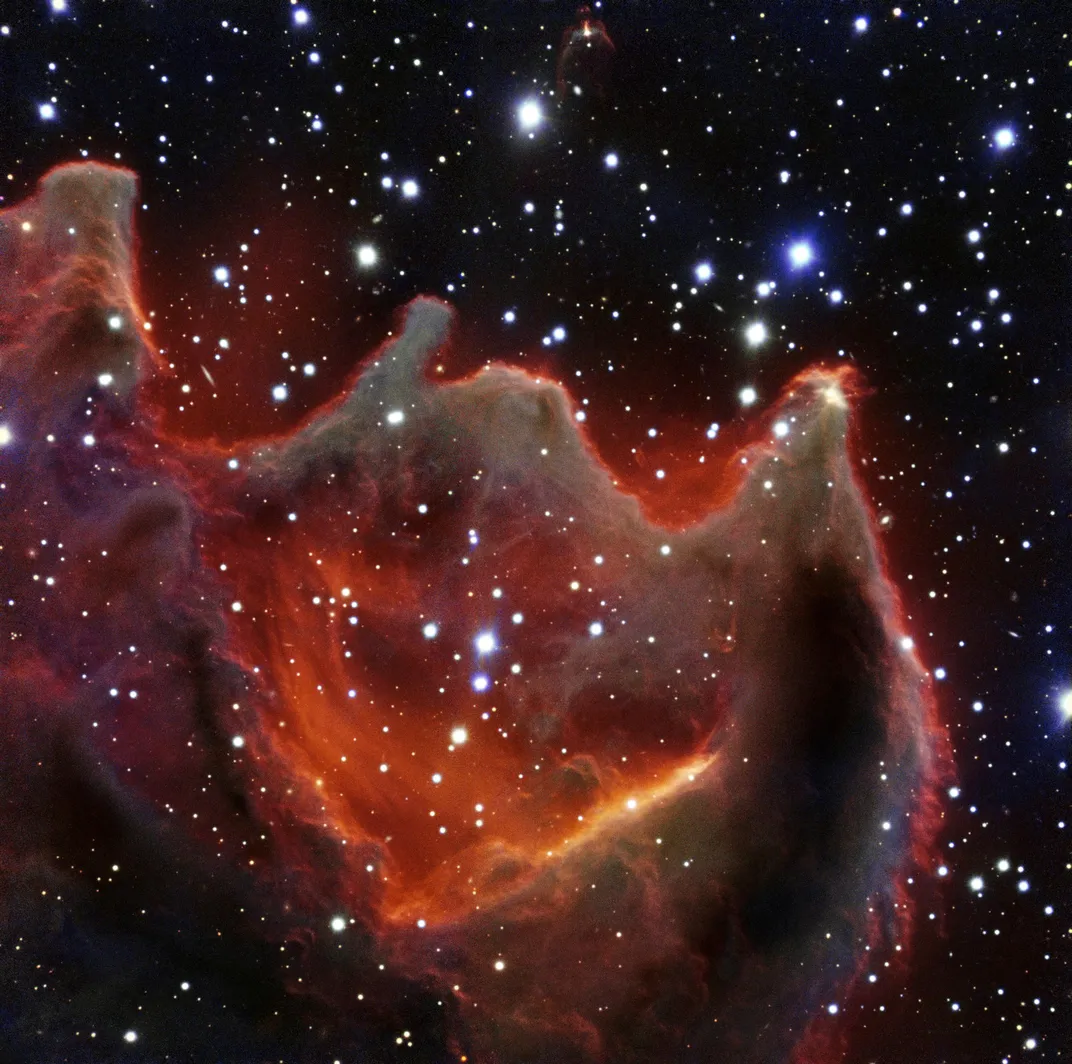
The head of a cometary nebula called CG4 seems poised to snack on some stars in this image from the European Southern Observatory's Very Large Telescope in Chile. Cometary nebulae don't have much to do with comets beyond a superficial resemblance—the interstellar clouds of gas and dust have dense heads and long, faint tails. Astronomers debate how these nebulae got their strange shapes, something that could be revealed as telescopes gather more data on their density, composition and temperature.
This image, released on January 28, shows CG4 as it appears in visible light. The thick cloud glows because it is bathed in the light of nearby stars. Unfortunately for the gaping nebula, radiation from those stars is slowly eroding its head, and the object will gradually be eaten into oblivion.
Double Trouble
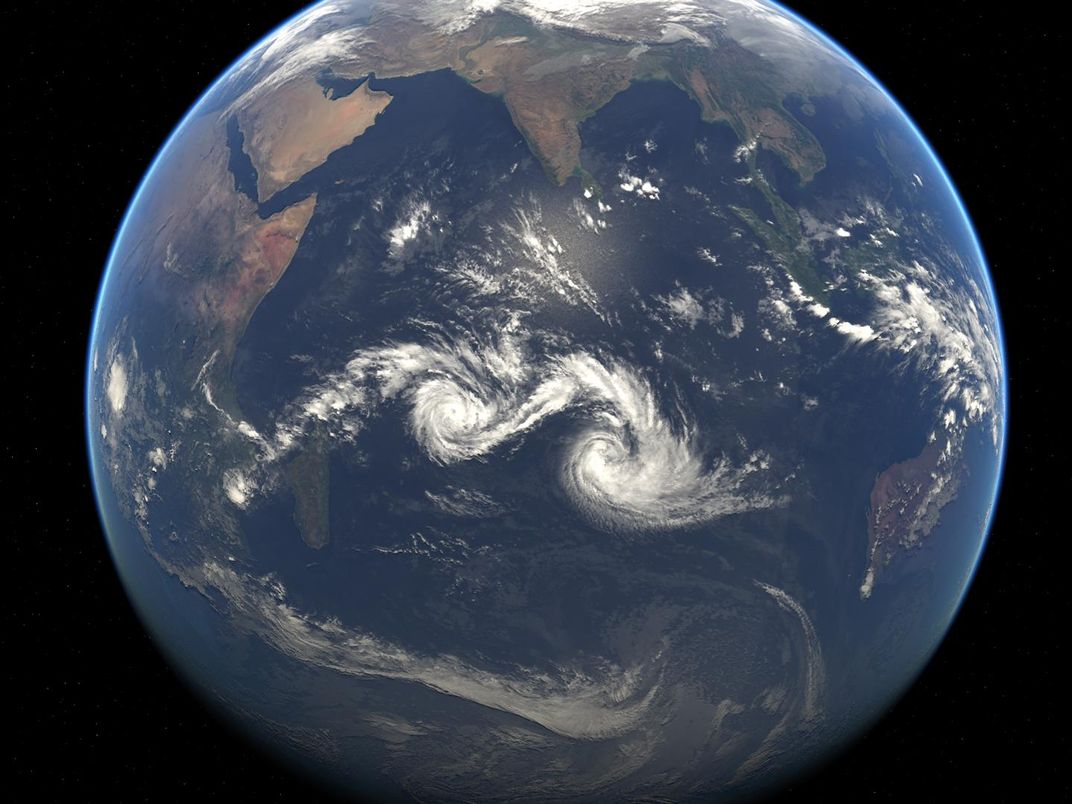
While the U.S. Northeast was hunkering down under a snowy Nor'easter, a pair of tropical cyclones was pirouetting across the Indian Ocean. The cyclones, dubbed Eunice and Diamondra, were not especially strong and not expected to cause much damage on land. But the striking satellite images offered meteorologists a chance to study their potential for a stormy merger.
When two cyclones get close enough to each other—with less than 680 miles between their centers—they can start to rotate around a common axis in what is known as the Fujiwhara Effect. Eventually they can even merge into one mega-storm. This composite image, taken on January 28 by satellites run by Europe and Japan, shows that the eyes of Eunice and Diamondra are separated by 930 miles—too far apart, it turns out, for them to join forces.
Opportunity on Mars
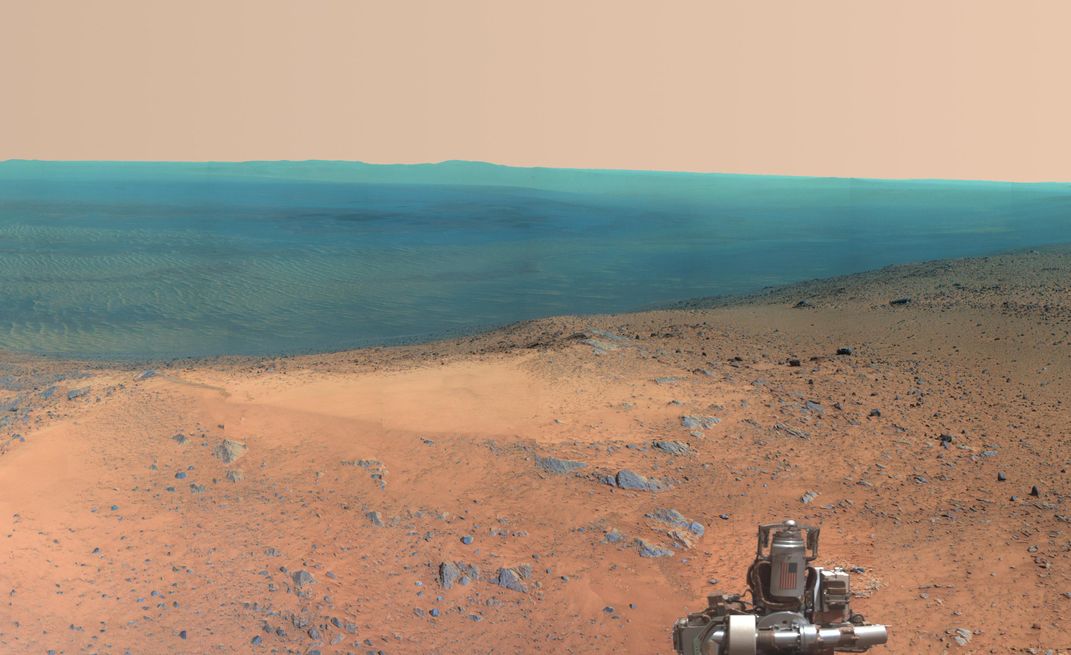
January 25 marked the 11th anniversary of the Mars rover Opportunity, which has been trundling across the red planet gathering clues to its geologic past. Since landing in 2004, Opportunity has driven almost 26 miles and is now exploring the rim of a large impact basin called Endeavour Crater.
This scene is part of a panoramic view taken from a raised section of the crater's rim dubbed Cape Tribulation. To get there, the rover had to climb about 440 feet in elevation—roughly 80 percent the height of the Washington Monument. The image is a false-color composite made to show the differences in the surface materials around the crater.
Comet Face-Off
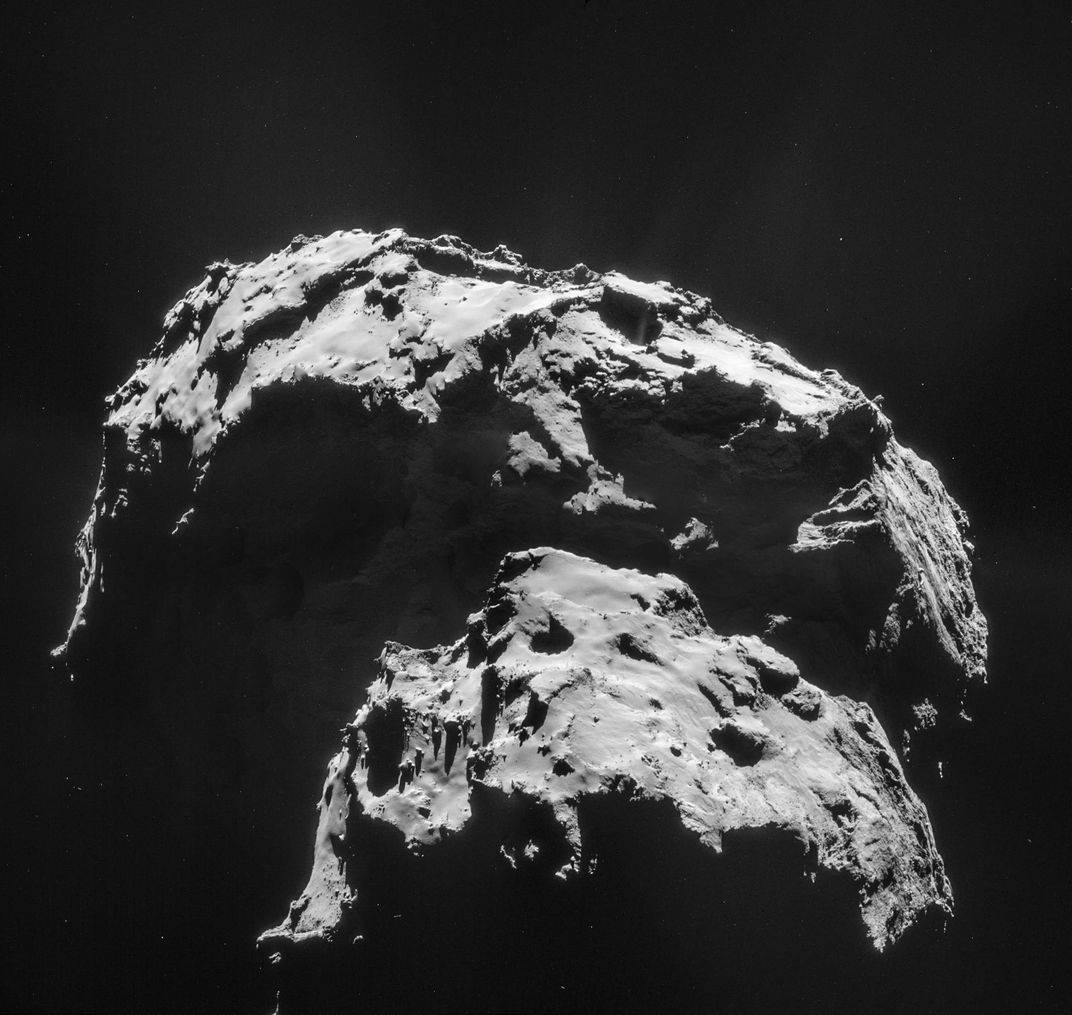
The European Space Agency's Rosetta orbiter continues to send back detailed images of its quarry, the oddly shaped comet 67P/Churyumov–Gerasimenko. This view, released on January 28, was snapped from a distance of about 17 miles from the two-lobed comet's center.
Somewhere on the comet is the Philae lander, a secondary probe that had a bumpy touchdown on the icy body in November. Scientists were able to collect data from Philae for a few days before its batteries ran out, but the probe is now silent and its exact whereabouts are unknown. The Rosetta mission team is currently debating whether to send the orbiter to swing closer to the comet and hunt for Philae. There's no guarantee of success, and doing so would spend precious fuel that could otherwise be used for collecting more scientific data.
Super-Saturn
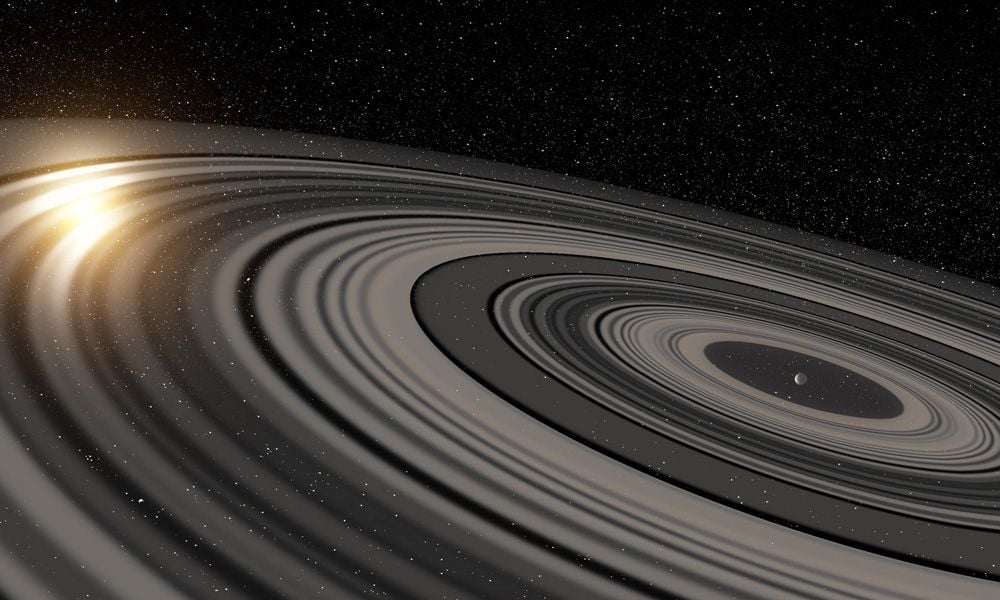
The exoplanet known as J1407b gives a whole new meaning to "put a ring on it." In 2012 astronomers in the Netherlands discovered the planet circling a young sun-like star about 434 light-years away. They could see the dip in starlight each time the planet passed in front of its parent star. But in an exoplanet first, the giant world also displayed a ring system akin to the one that decorates Saturn, which the astronomers could see eclipsing the star.
New analysis of the data shows that the planet is surrounded by more than 30 rings, and the entire system is 200 times larger than the one around Saturn. In addition, the team can see gaps in the rings, hinting that new moons are being born from their dusty debris. This illustration shows what the "super Saturn" might look like as its rings eclipse the young star.